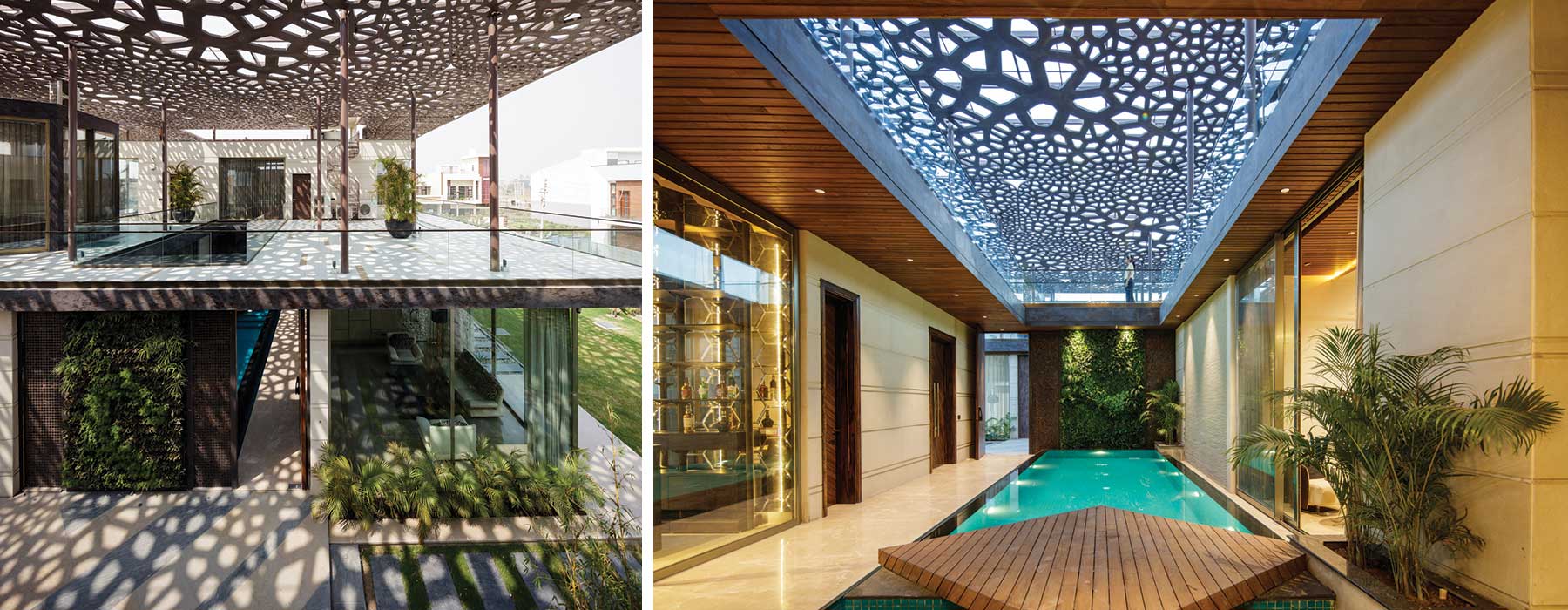
Different typologies of buildings require different levels of flexibility. The residential sector needs to cater to Work-From-Home requirements; in office design, infrastructure is needed for online meetings, social distancing, and open work culture. Similarly, institutional buildings have also witnessed significant changes such as a major adoption of technology that in turn demands modifications in the spatial approach.
In fact, biophilia and materiality tops the design and spatial requirements by clients in all typologies. On the whole, the pandemic was an opportunity in crisis that made people take a re-look at their lifestyle, work culture, spatial needs, etc.
Sustainable design seeks to minimize negative impacts on the environment while promoting healthy living.
When it comes to enabling good living through architecture, the role of sustainable design that prioritizes energy-efficiency assumes immense significance. Sustainable design seeks to minimize negative impacts on the environment while promoting healthy living and comfort for building occupants, thereby improving building performance.
Sustainability aims to meet the needs of the present without compromising on the requirements of the future, by minimizing waste and reducing reliance on non-renewable resources.
For our built environment, the concept of energy efficiency puts into focus how we can assimilate architectural wisdom from our vernacular and leverage modern technology to develop environmentally compatible and economically viable buildings. Fundamentally, it calls for designing in tune with nature, site, and climate.
Whether it is a new building or a retrofit, digitalization is making the lives of architects, builders, and contractors easier and more efficient.
Digitalization has widened our understanding of space, allowing us to reinterpret old methods and learn new ones to plan and design better. It has also provided fresh impetus to architects to analyze a building’s environmental impact, carbon footprint, energy consumption, and an overall efficiency, looking at sustainability through critical lens. Digital tools also provide the opportunity to re-evaluate design for economic viability by running parallel cost analyses.
With the exponential growth of technology in recent times, computer-aided design (CAD) has revolutionized workflows in the design and construction industry. Similarly, Building Information Modelling (BIM) has emerged as a reliable software for collaborative work.

With the advent of parametricism, previously inconceivable designs are now fast becoming a reality, resulting in highly efficient solutions that minimize resource consumption while providing maximum occupant comfort.
The building industry accounts for a significant chunk of global carbon emissions. Digitalization offers a roadmap to script a new chapter focused on sustainable and responsible design practices.















